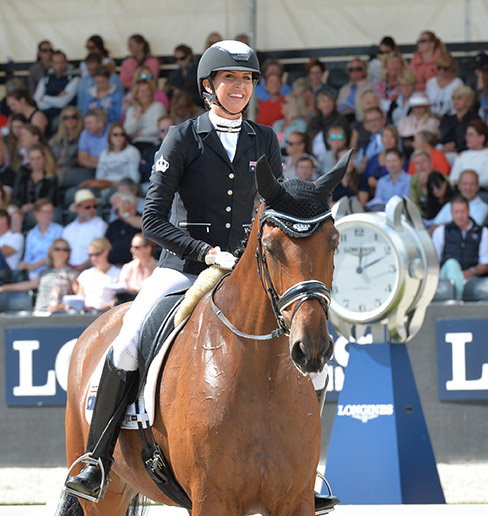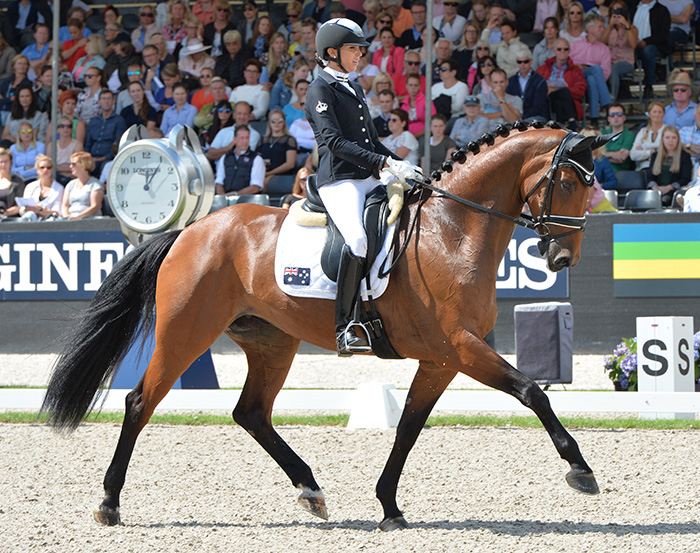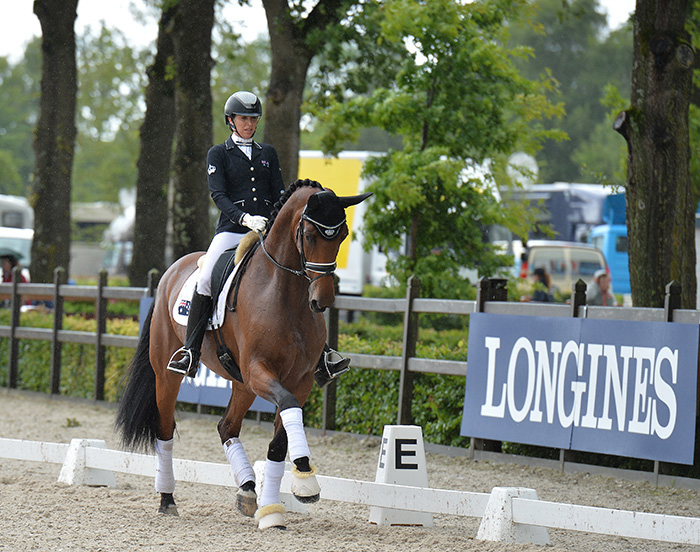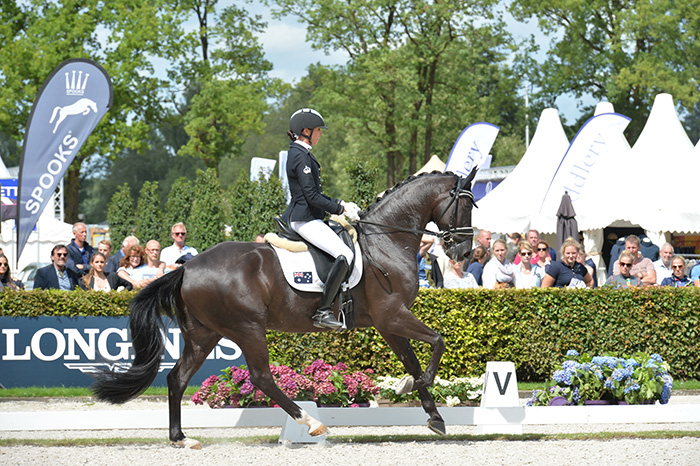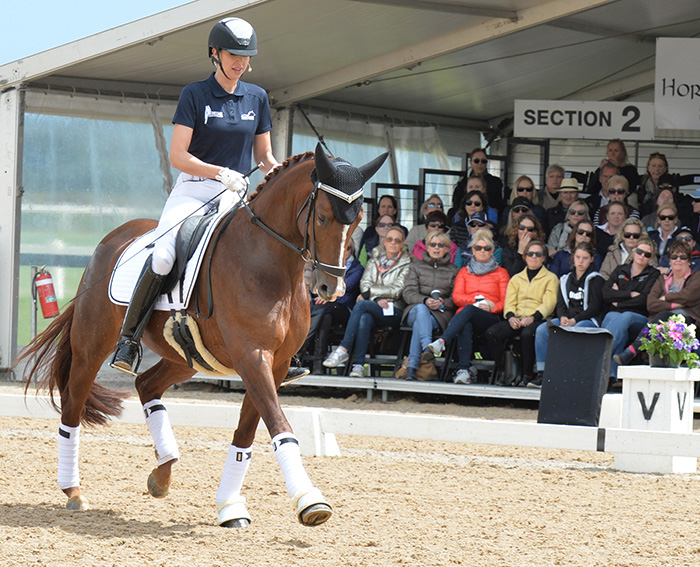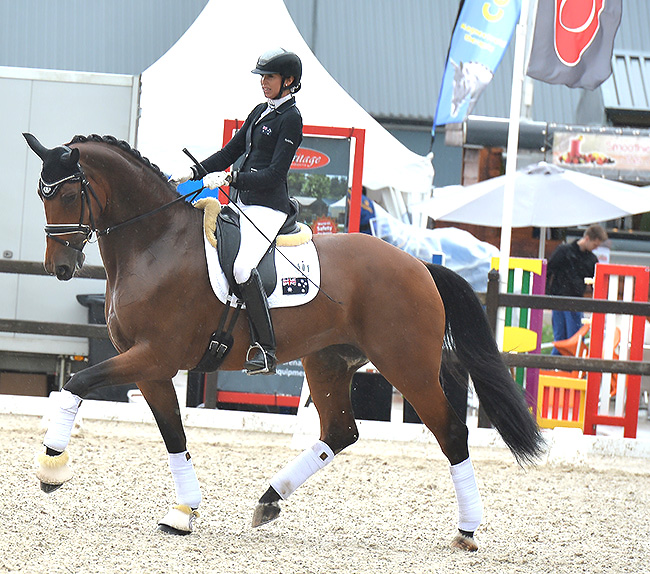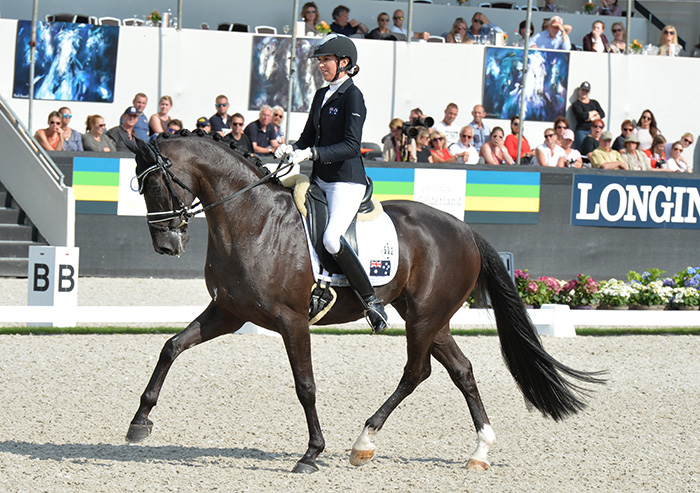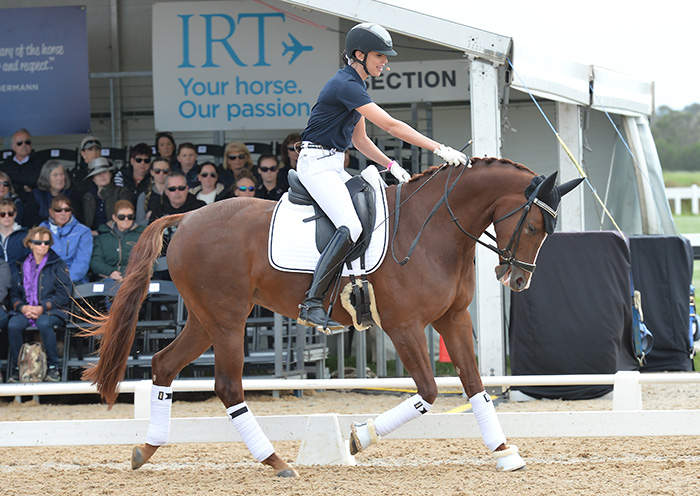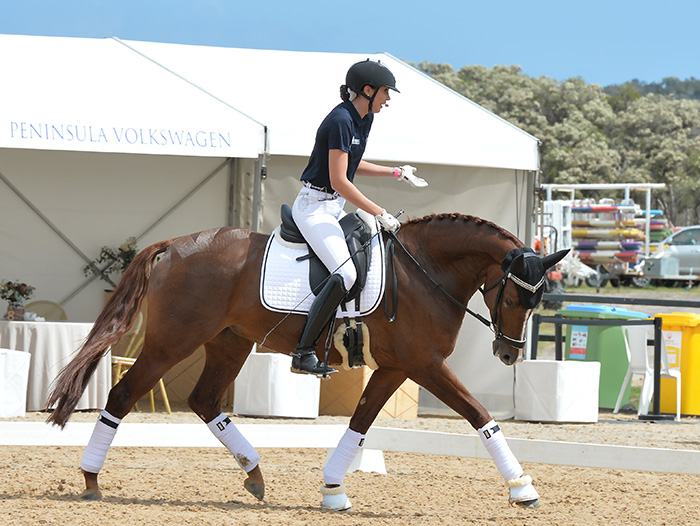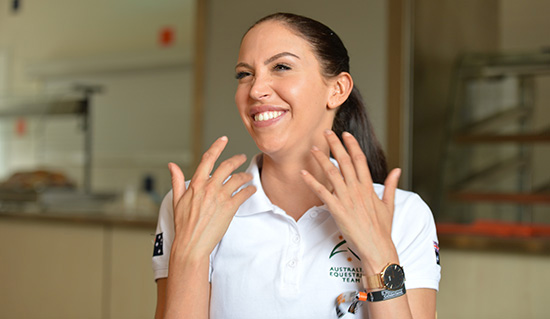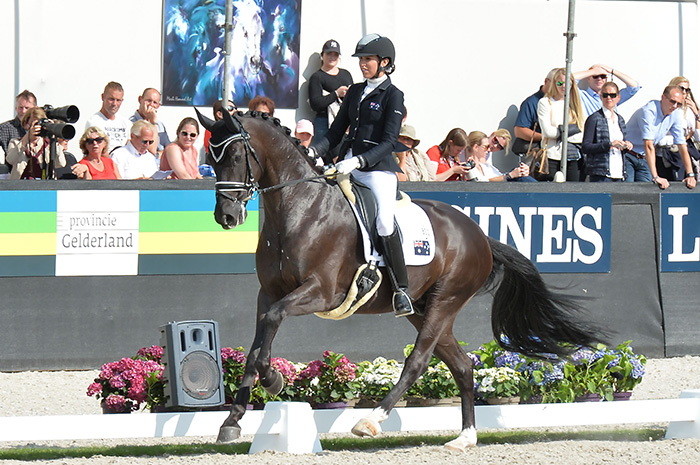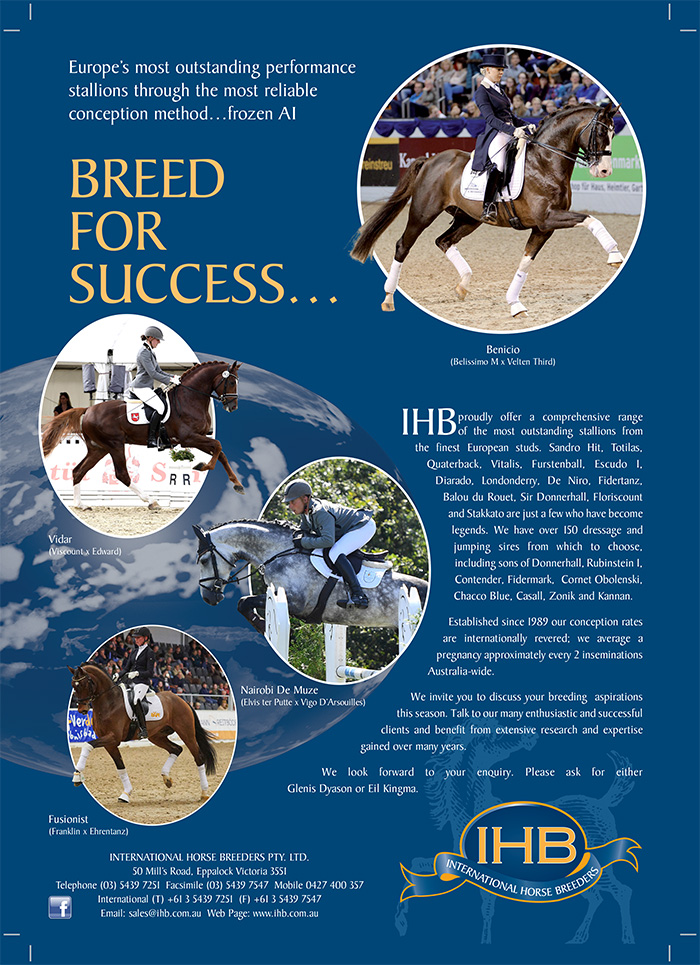Scarcely a day goes by without Simone Pearce achieving a new highest score for an Australian, how did she get there?
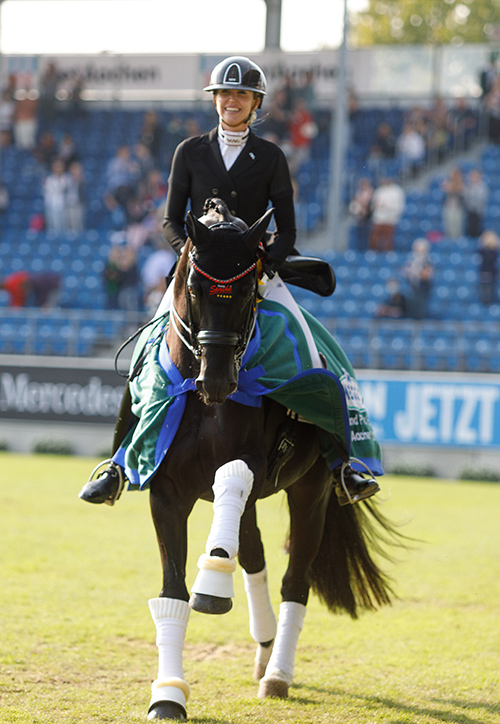
Along with all her other talents, Simone Pearce is a natural when it comes to being interviewed… On a visit to Australia, she shared her knowledge and insights on the European scene.
How is it that you sit on a horse, and your legs are ten times quieter than we see with most of the Australian based riders, and yet your horse is 100% more forward?
“I have to say something funny, because when I first moved to Europe, the first thing my first boss said was look at her legs! She cannot possibly be a professional with legs like that! That’s the first thing I heard when I’d just got off the plane from Australia, so it was a real struggle for me in the first twelve months – a real struggle to get my legs still.
The first thing was that I developed my legs to be still, and that’s a structural thing – but my horses are off the leg because I don’t touch them as much as other riders. Other riders are kick, kick, kick, kick, me, I have still legs, quiet legs, I support the horse. If I need them I use them, but otherwise… that’s the thing with everything, patience, quiet, not so much movement, simplify everything, take it back to basics.”
You say you had to re-make the way you used your legs, but how do you do that?
“It was a lot of personal perseverance. The place that I was at, my boss was not going to tell me every two minutes to keep my legs still and my toes in. She told me about three times and then she said, I’m not telling you any more, it’s your turn to fix it yourself. And that’s what I did.”
When you were talking about contact, you were saying, not strong but not give away, which are the only two options our riders seems to consider…. What is the middle option you are looking for?
“For me, the way to get the perfect contact is by having shorter reins. I think more about my elbows than my hands. Your elbows should be giving and your hands keep steady on the contact. That’s really important, so many riders pull back with their hands and let the elbow also pull backwards, but for me, you have to have a soft elbow and a steady hand, not a strong hand, a steady hand.”
The other thing I find interesting about your riding is that while it is almost a cliche of the young horse rider to ride shoulders back, seat grinding into the horse – you rode at your Masterclass here in Australia with a slightly forward upper body all the time… that’s conscious?
“Yes, it is in this instance – on my own horses for example, you won’t see me lean so far forward, but with the horse I rode today, I want her to be a lot more round than perhaps she has been before, a lot more forward than she has been before and so she doesn’t need my tension coming against her. I’m very conscious to be soft to the young horses. I think a lot of people have the perception that young horse riding is about being strong, but it is not – it is about being very soft and forward. I think that is what is lacking, riders get too much backwards, too much kicking, I don’t kick and I don’t lean backwards. I’m very patient, all the time encouraging the horse to go forward. You would see, if I rode this horse a few more days, I would come back to a more upright, competition posture. At the moment, that is too much for her. I am very conscious of allowing the horse to have what it needs to have at the time.”
You talked about how in between movements, in your transitions, you wanted one stride of shoulder in?
“It’s a bit like when you teach a dog something, and you use a clicker, and the clicker gets the dog to think, okay, now I have to do what my trainer wants me to do. It’s exactly the same thing with the horse, the shoulder in re-connects the horse to the rider – so I use it when the horse is straight and running a little bit, instead of getting hectic and pulling backwards – you have no opportunity to do that in the show – so I just use one step of very gentle shoulder in to re-connect the horse to me. Shoulder in and corners, that’s all I do. On my Grand Prix horse, I never train Grand Prix movements, I train shoulder in, corners. With my young horses, shoulder in, corners – that’s the secret!”
Do you think that you are lucky that you are showing young horses in an era when the style of young horse showing has moved from super spectacular to soft and harmonious?
“Yes, definitely, and to be honest I find it very funny when people call me a young horse rider, because I don’t think I’m a young horse rider at all. I’m just a rider, and as a professional you should be able to do everything. I think the young horse riding has changed so much in the last five years in a really really good direction, and I feel the success I have had as a young horse rider is through true training and I am very proud of that, and I hope that it continues in this way because I really enjoy it.”
It was interesting when you were riding Cognac here today , when the mare started to get a bit upset, you just sat quiet and worked your way through it…
“It is exactly how I ride at home, it’s fine, no stress.”
But you didn’t give up and throw the contact away…
“No, no, no – I, 100% stay with what I want, and what I want is contact and forward, but she doesn’t have to do it in the next step because it is not going to happen so there’s no point in fighting with her. I’m just showing her and guiding her to what I want.”
Do you think it is your timing, you are so quick to reward…
“That’s something a lot of riders have trouble with, they don’t know when to hold and when to give, and to be honest, that comes with a lot of experience and feeling. You can’t say to someone – this is the time, there is no time, you have to feel it. It’s hard but it helps if you trust yourself more – I think a lot of riders don’t trust themselves enough.
I never think what if? I think, it’s good, good girl, or it’s not good, no stress, just this, this, this. I think I’m quite lucky that I naturally have quite a lot of feeling. It’s the hard truth of riding, there are some people who are naturals. I’ve been messy before, but I’ve always had that feeling to sort of know when to stop and when to go, but you can definitely develop it by having a good trainer – that’s essential.”
Catch up with Simone, who has moved back to Germany:
And for more of her clinic in Australia:

